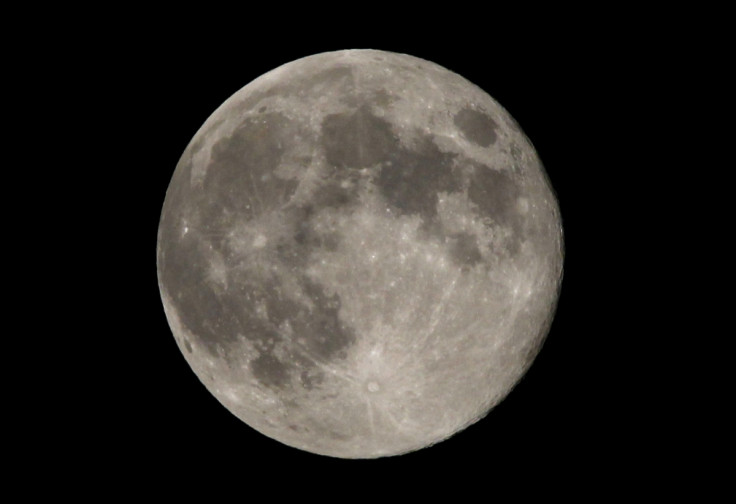Lunar Water Study Raises Questions About Moon's Fiery Birth and Evolution

A study into how much water is on the moon has led scientists to question everything we know about the formation and evolution of the lunar body.
Researchers believe the amount of water in the moon has been overestimated by scientists looking at a specific mineral.
Published in the journal Science, the team from the UCLA Department of Earth, Planetary and Space Sciences created a computer model to look at how the mineral apatite crystallised from cooling lunar magma when the moon was in its infancy.
Study leader Jeremy Boyce said: "The mineral apatite is the most widely used method for estimating the amount of water in lunar rocks, but it cannot be trusted. Our new results show that there is not as much water in lunar magma as apatite would have us believe."
In their simulations, they found the apatite crystals were unusually rich in hydrogen and that they may not have formed in a water-rich environment as had previously been expected.
Their findings dispel a long-held assumption that apatite, a word derived from the Greek for "deceit", is a good indicator of moon water content.
For many years, scientists had thought the moon was almost completely dry. However, the discovery of hydrogen-rich apatite in 2010 hinted at a more watery history. Researchers had said this could be used to predict how much water was on the moon. However the UCLA study now says this is a deceptive theory.
"We're knocking out one of the most important pillars of evidence regarding the conditions of the formation and evolution of the moon."
Study leader Jeremy Boyce
Boyd says the high water content is the result of a fast crystallisation process, not a water-rich environment. Hydrogen will only be included in the crystallising mineral if fluorine and chlorine – apatite's preferred building blocks – are not present.
"Early-forming apatite is so fluorine-rich that it vacuums all the fluorine out of the magma, followed by chlorine. Apatite that forms later doesn't see any fluorine or chlorine and becomes hydrogen-rich because it has no choice."
The researchers say their findings have huge implications for our understanding of the moon and its formation.
Most scientists believe it formed four billion years ago after a giant impact caused a huge chunk of the Earth to come free. The moon would have been completely molten and would have been virtually void of water – a paradox for scientists trying to work out how much water was there.
"We had 40 years of believing in a dry moon, and now we have some evidence that the old dry model of the moon wasn't perfect. However, we need to be cautious and look carefully at each piece of evidence before we decide that rocks on the moon are as wet as those on Earth.
"We're knocking out one of the most important pillars of evidence regarding the conditions of the formation and evolution of the moon. Next, we plan to determine how badly apatite has distorted our view of the moon and how we can best see past it to get at the moon's origin."
© Copyright IBTimes 2025. All rights reserved.






















